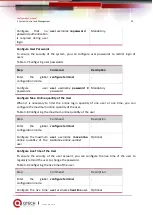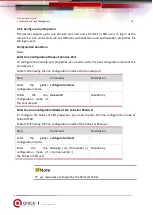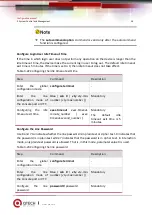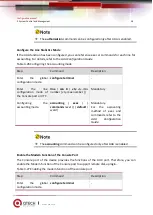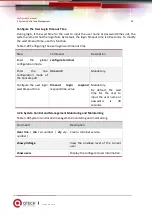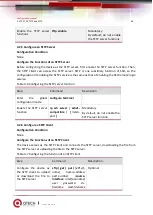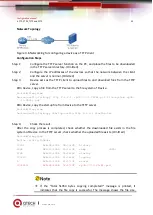
Configuration manual
4. FTP, FTPS, TFTP and SFTP
41
www.qtech.ru
4
FTP, FTPS, TFTP AND SFTP
4.1
Overview
File Transfer Protocol (FTP) is used between a server and a client to transmit files. It improves
file sharing, and provides an efficient and reliable data transmission mode between the user
and remote computer. The FTP protocol usually uses TCP port 20 and 21 for transmission. Port
20 transmits data in active mode, and port 21 transmits control messages.
Similar to most Internet services, FTP uses the client/server communication mechanism. To
connect to an FTP server, usually you are required to have the authorized account of the FTP
server. On the Internet, a large number of FTP servers are anonymous FTP servers, which aim
at provide file copying services to the public. For this type of FTP server, users need not
register with the server or obtain authorization from the FTP servers.
FTP supports two types of file transmission modes:
ASCII transmission mode, in which text files are transmitted.
Binary transmission mode, in which program files are transmitted.
If the device acts as an FTP client, only the binary transmission mode is supported. If the device
acts as an FTP server, both transmission modes are supported.
FTP supports two working modes:
Active mode: An FTP client first sets up a connection with an FTP server through the TCP21
port and sends commands through this channel. If the FTP client wants to receive data, it
sends the PORT command through this channel. The PORT command contains through
which port the client receives data. Then the FTP server connects its TCP20 port to the
specified port of the FTP client to transmit data. The FTP server must set up a new
connection with the FTP client to transmit data.
Passive mode: The method of setting up the control channel in passive mode is similar to
that in active mode. However, after the connection is set up, the PASV command instead of
the PORT command is sent. After the FTP server receives the PASV command, it opens a
high end port (with the port number larger than 1024) and inform the client to transmit
data through this port. The FTP client connects to the port of the FTP server, and then the
FTP server transmits data through this port.
Many Intranet clients cannot log in to the FTP server in active mode, because the server fails to
set up a new connection with an Intranet client.
When the device acts as an FTP client, it sets up a data connection in active mode.
FTPS is one enhanced FTP protocol of using the standard FTP protocol and commands, adding
the SSL security function for the FTP protocol and data channel. FTPS is also called FTP-SSL and
FTP-over-SSL. SSL is one protocol of encrypting and decrypting the data in the security
connection between the client and the server with the SSL function. On the device, only the
FTP client supports the function.
Trivial File Transfer Protocol (TFTP) is a simple file transfer protocol which is based on the User
Datagram Protocol (UDP). It transmits data through UDP port 69. The protocol is designed for




